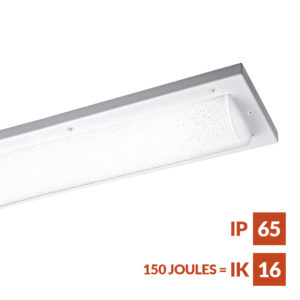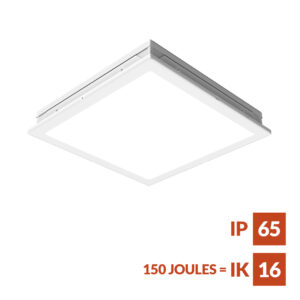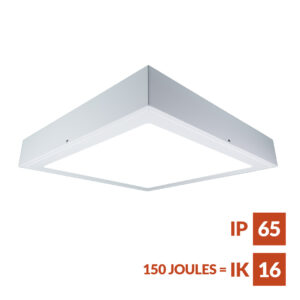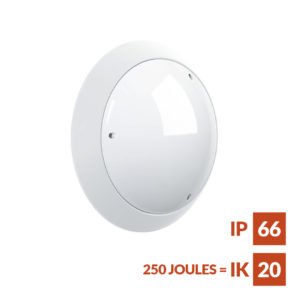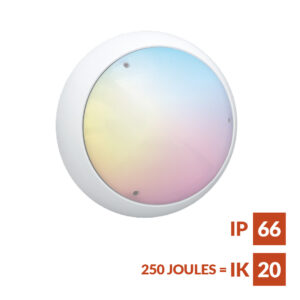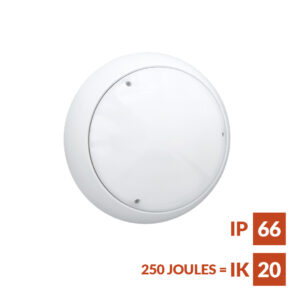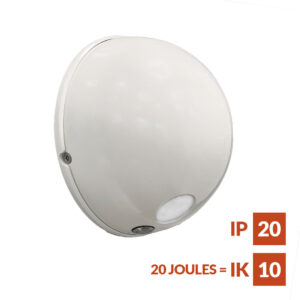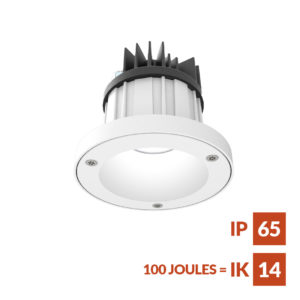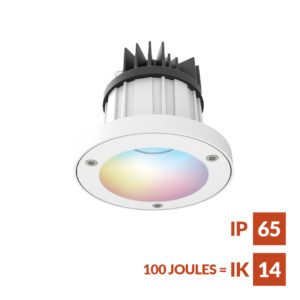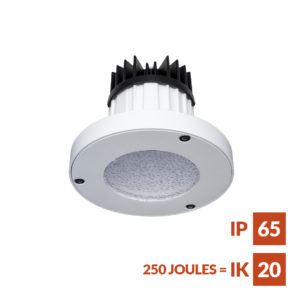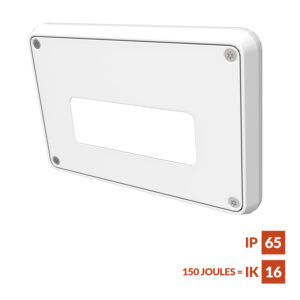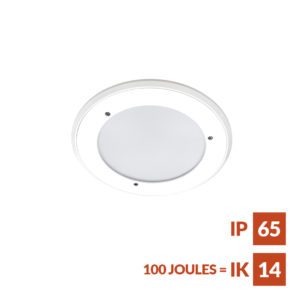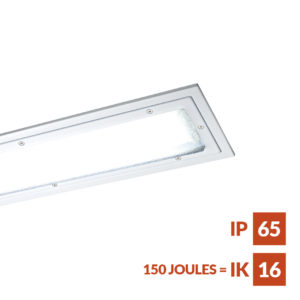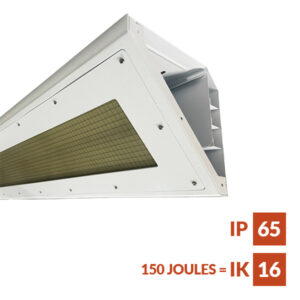Anti-ligature luminaires are designed to prevent people from self-harming.
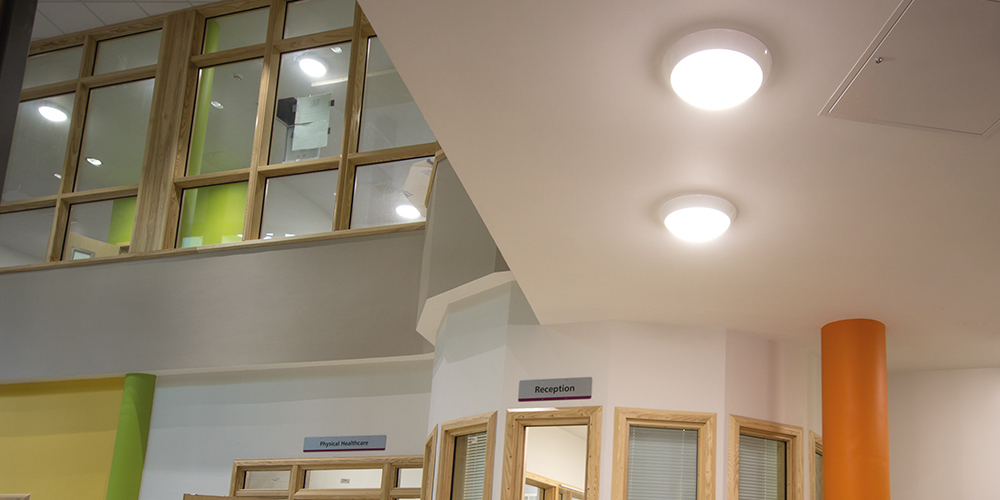
Anti-ligature luminaires are mainly used where people are considered “at risk” such as in prison or a secure healthcare facility. There are generally no moving or protruding parts. Rounded or bevelled corners also prevent points where something can be attached. This means there are no ligature points or attachment areas that could enable a luminaire to be used for self-harming.
For example, in the UK “safer cell” prison applications require anti-ligature luminaires to be specified. The UK Ministry of Justice (MoJ) standards state that “the luminaires must be designed so as to reduce the potential for a prisoner to attach a ligature in order to attempt suicide”. We achieve this by minimising the aperture between the luminaire’s diffuser and body, using tamper proof screws and designing the body to be suitable for the application of anti-pick mastic during installation.
Video
Watch our anti-ligature testing process to discover how our tests are conducted to ensure the durability and safety of our products for service users in custodial or secure health environments.
The Anatomy of Anti-ligature Luminaires

A. An anti-ligature luminaire is designed to minimise the aperture between the diffuser and body.
B. A high impact resistant diffuser is secured by Resistorx screws ensuring no parts can be removed to be weaponised.
C. A removeable gear tray allows for easy upgrade and maintenance without the need to disturb the anti-pick mastic.
D. A robust material body is strong and durable. An oven-baked finish provides a protective skin of tough polyester paint.
Design and Testing
We design an anti-ligature light fitting by minimising the aperture between the luminaire’s diffuser and body. We then conduct specific tests at the design stage. This includes determining the degree of slope a 20 kg weight attached to a galvanised suspension cable, of differing widths, will slide off a luminaire at different angles of incline.
Utilising tamper proof screws and designing the body to be suitable for the application of anti-pick mastic during installation prevents the lighting from being breached or even used as a weapon. 95% of our secure health luminaires are designed to be disassembled and reinstated to ensure maintenance can be undertaken quickly and easily after anti-pick mastic application.
Our Testing Procedures Based On The Guidelines Of The BRE/ DiMHN
In the guide, anti-ligature products are classified and rated in different risk groups. The ratings are based on a number of factors: Can any materials or items from a standard list of products that may be available to a Service User be used to secure a ligature point, how easily can a ligature anchor point be established and if so what weight can it hold.
The classification can be extended to achieve an ES (Extra Secure) rating by further testing simulating a determined attack using tool(s) from security level 2 – such as a belt or credit card, for up to 20 minutes to try and secure a ligature anchor point. According to these criteria, the Arculus, for example, falls into the LIG5-5-ES2 category.
| Material At Which Ligature Anchor Point Achieved | Bed Sheet | 4mm Wire | 2mm Wire | 1mm Wire | 0.5mm Wire |
| Release Load | |||||
| >20 kg | LIG1-1 | LIG1-2 | LIG1-3 | LIG1-4 | LIG1-5 |
| <20 kg | LIG2-1 | LIG2-2 | LIG2-3 | LIG2-4 | LIG2-5 |
| <10 kg | LIG3-1 | LIG3-2 | LIG3-3 | LIG3-4 | LIG3-5 |
| <6 kg | LIG4-1 | LIG4-2 | LIG4-3 | LIG4-4 | LIG4-5 |
| <3 kg | LIG5-1 | LIG5-2 | LIG5-3 | LIG5-4 | LIG5-5 |
Level 1 – Base level assessment
Level 2 – Determined attack for 20 mins – ES2
Level 3 – Determined attack for 40 mins – ES3
During the testing we attempt to manipulate or damage the luminaire using a variety of materials, used singularly and in conjunction with one another, to attempt to attach loops or nooses – both around the luminaire body itself and in any gaps between components. The tests are very close to the real world in that we use items from service users everyday lives, for example:
- Clothes
- Bed linen
- Credit / plastic cards
- CDs or DVDs
- Shoelaces
- Keys
- Plastic cutlery
If the test shows that a ligature point can be created on the luminaire, we test the weight that the anchor point can hold and the angle of release when the ligature anchor gives way. These factors determine the overall risk category classification for the luminaire.
Our Anti-ligature Luminaires
Contact Us
You can also connect with Designplan on LinkedIn. Subscribe to our mailing list for ongoing updates.

